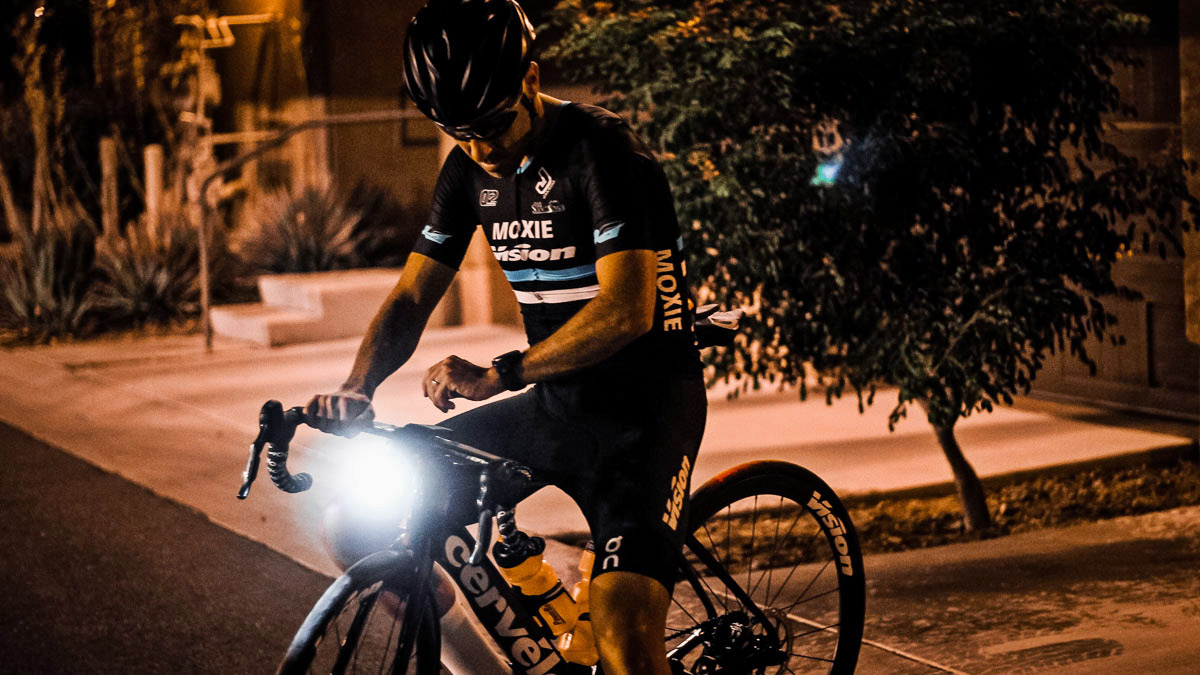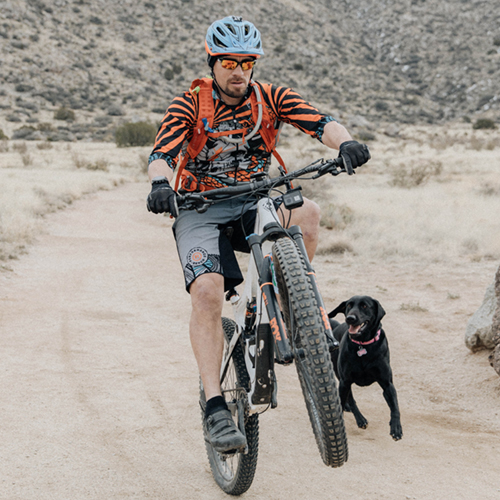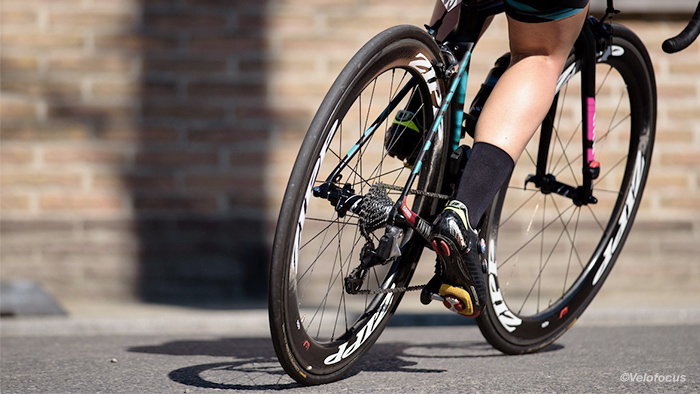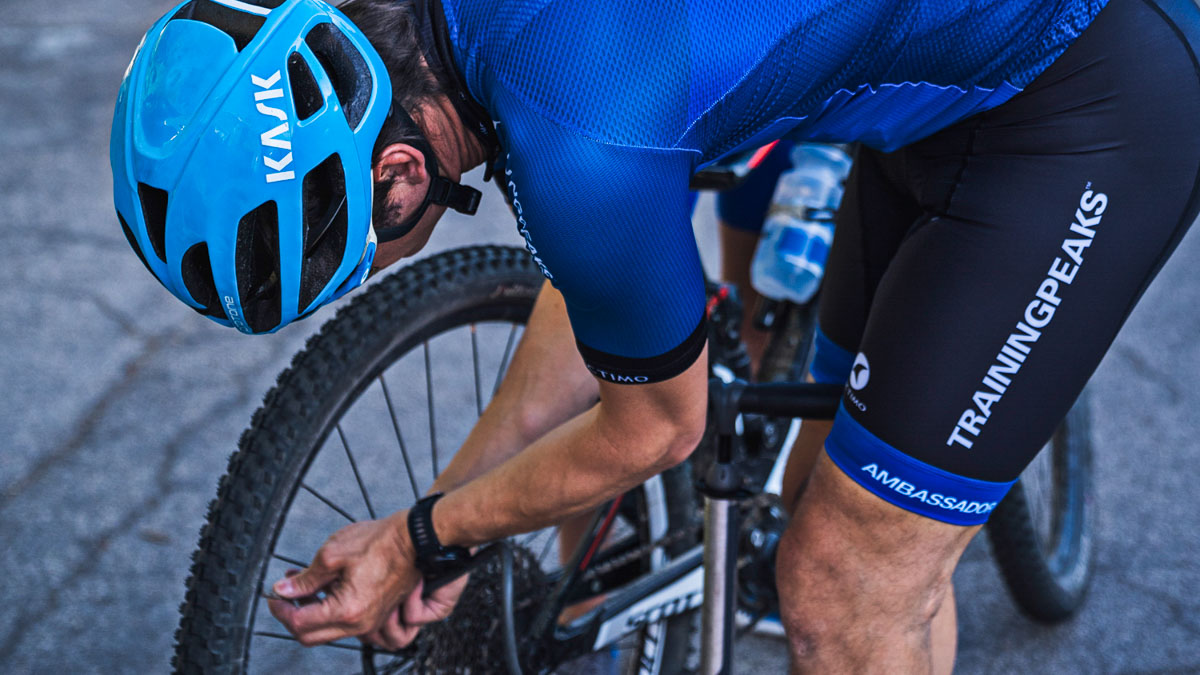In the previous post in this series, I exploded the fallacy that buying a better mountain bike is going to make you faster or help you overcome your limitations on the trail. In fact, for 99 percent of people, getting stronger and more stable is the order of the day. Now let’s turn our attention to another area in which many riders have a lot of room for improvement: anaerobic capacity. In this article, I’ll explain how many MTB athletes typically fall short in this kind of training, share my own experiences as both a rider and coach, and suggest a minimum effective dose approach to improve your capacity.
I vividly remember that when I started mountain biking, it was so much fun that I wanted to do it every day. Many of my UFC fighters feel the same way. They go out for one ride with me and are instantly hooked. It’s the same for my clients who pick up this exciting new hobby as well. Once they get to feeling comfortable on two wheels, it’s all they want to do. There’s nothing wrong with indulging what surfers call the “stoke,” as it’s this enthusiasm that will keep you coming back for more. But if all you’re doing is riding five, six, or even seven days a week, there will also be some downsides and you might unwittingly fail to plug some holes in your fitness game.
More Riding, Less Power
Let me give you a personal example. I think that overall, I’m in pretty good shape most of the time, not least because I coach and train alongside some of the best athletes on the planet. But over the summer, I got suckered into chasing new single tracks in the sunshine. Let’s face it, when the weather’s great and you get a good group to ride with, it almost always beats going into the gym. Yet as much fun as I had – particularly on fast and furious downhills – I began to wonder if the lack of structure in my approach was starting to take a toll. Though I felt fine on most of my rides and could keep up and sometimes pull ahead of my friends, I had a nagging suspicion that while my aerobic conditioning was good, I was missing something.
To test the theory, I attempted five rounds of a demanding interval threshold session (more on this type of training in a moment). By the time I got to round three, my heart rate was pretty much maxed out and I admit that I was gassed. Next, I subjected myself to the rigors of an FTP test. For the uninitiated, this is an assessment that is performed by doing a ramp test. The test increases intensity until you can’t go anymore, then your FTP is discovered by multiplying peak watts by .75 (another variation is a 20 minute test, whereby you multiply your average wattage by .95). I found that unfortunately my suspicions were correct, and I was down 25 watts on my previous score. Such a number isn’t everything, of course, but it showed that because I’d been slacking off on my functional training in favor of fun rides more often than not, my top-end power had dropped off considerably.
Fortunately, I knew what the solution was: to get back on the same kind of program that I prescribe for my fighters and everyday clients alike. One of the main challenges that many people find with doing so is that they’re pushed for time. This might not be the case if you’re an athlete who’s either preparing for competition or recovering from a fight. But for those who aren’t paid to perform physically, they’re most likely working at least one demanding job. Perhaps they’re combining working from home with remote schooling for their kids, too, as well as doing all the other things involved in a busy professional lifestyle.
This means that there’s limited time for training and also, in my experience, a finite capacity to deal with the minutiae of a complex training plan. I’ve found that if you overload people with too many strength or conditioning sessions, they feel like they no longer have enough time to ride. If these workouts are overly complicated, they’re far less likely to stick to them, which is going to put a cap on the outcome. And if you try to get them to go too hard for too long, they tend to burn out.
A No-Frills Approach to Power Development
This is why I’ve come up with a minimum effective dose approach. In addition to doing some of the strength training that I detailed in the previous post and continuing to ride whenever possible, I suggest that clients dedicate two days a week to improving their anaerobic power. The first involves doing 10-second surges of speed followed by 50-70 seconds of mid-pace riding (depends on your ability to recover). These high-end efforts can go up as high as 400 percent of an athlete’s FTP wattage, which is repeatable because it’s in such short bursts.
The second weekly session involves performing two to five-minute intervals that are comparatively lower and less intense than the 10-second sprints but still above to your anaerobic threshold (105-125% FTP). This allows us to elevate your VO2 max. After testing a client, I often find that there’s a pretty significant gap between their power output in the FTP test and what they’re capable of at the top of their VO2 range. If your FTP wattage is 200 but you can go all the way up to 300 watts before hitting your VO2 max, there’s a lot of untapped potential.
Typically, I’ll space these sessions out by at least a couple of days, performing the first on a Tuesday and the second on a Thursday. This gives the nervous system time to recover and lets you fit in a ride or two in between. The sessions usually last 45 to 60 minutes including warmup and cool down, and are very simple for even beginners to follow (although not always to complete at first, particularly if they’re not used to top-end, high-intensity sessions or, like me, have stopped such training for a while). Subjectively, such a routine can lead to a client’s friends asking them, “What have you been doing?” because tough rides seem so much easier. Objectively, sticking to this twice a week program for as little as a month can yield a 10 percent increase in power output. The FTP score typically goes up first, soon followed by an increase in VO2 max.
While it might not seem like such sessions are very fun compared to getting out on your bike, I’d argue that the more fit and powerful you are, the better rider you’ll become, and the more enjoyment you’ll get out of MTB. When you’re confidently bombing downhill with your buddies trailing in your wake with that “How the heck did you get this fast?” look on their faces, that’s about the most fun you can have on your bike.
The Two Weekly Power Training Sessions
I already provided simple examples of the two kinds of interval training sessions that can help you boost your anaerobic power output. Here are some variations for you to try as you move through this simple yet effective program:
Anaerobic Conditioning Workout 1
Warm-up
2 minutes 55% FTP
1 minute 65% FTP
30 seconds 100% FTP
30 seconds 50% FTP
30 seconds 120% FTP
1 minute 60% FTP
30 seconds 120% FTP
3 minutes 50% FTP
Main Set
5 reps (20 seconds at 120 % FTP with 1 min 80% FTP recoveries between each)
Recover for 3 min at 50% FTP between each block and repeat main set block 1-3 more times.
Your ability to repeat should be based on whether or not you can continue with your prescribed efforts. When this becomes too challenging it is time to stop and save it for another day. The following week try to add an additional block or just one extra hard effort per block.
Anaerobic Conditioning Workout 2
Warm-up
2 minutes 55% FTP
1 minute 65% FTP
1 minute 90% FTP
30 seconds 50% FTP
30 seconds 120% FTP
1 minute 50% FTP
30 seconds 120% FTP
3 minutes 50% FTP
Main Set
8 – 15 reps (8 seconds all out with 52 seconds 50% FTP recoveries between each)
Your ability to perform more reps is based on staying within 90% of your peak sprint watts. When you dip below 89% of your peak, it’s time to call it quits and save your efforts for another day. This workout is designed to help increase your overall peak wattage. If you’re falling off, you are only making yourself tired, not optimizing your performance.
Anaerobic Conditioning Workout 3
Warm-up
1 minute 55% FTP
1 minute 65% FTP
1 minute 75% FTP
1 minute 85% FTP
1 minute 95% FTP
3 minutes 50% FTP
Main Set
5 rounds (30 seconds at 120 % FTP with 30 sec 80% FTP recoveries between each)
Recover for 3 minutes at 50% FTP between each block and repeat main set block 1-3 more times.
Your ability to repeat should be based on whether you can continue to hit your prescribed efforts. When this becomes too challenging, it is time to stop and save it for another day. The following week, try to add an additional block or just one extra hard effort per block.
VO2 Max Interval Workout 1
Warm-up
1 minute 55% FTP
1 minute 65% FTP
2 minutes 75% FTP
1 minute 100% FTP
1 minute 65% FTP
1 minute 105% FTP
3 minutes 60% FTP
Main Set
3 – 5 rounds
3 – 5 min at 105 – 125% FTP. Recover for 3 -5 minutes (same as work set) at 60% FTP between each rep and repeat up to 5 rounds.
Your ability to repeat should be based on whether or not you can continue to obtain your prescribed efforts. When this becomes too challenging, it is time to stop and save it for another day. The following week, try to add an additional rep or add 30 seconds to your work set and build up to five minutes. As a default, start low and work your way up (3-minute work set with 3-minute recoveries, for 3 sets.)
VO2 Max Interval Workout 2
Warm-up
1 minute 55% FTP
1 minute 65% FTP
2 minutes 75% FTP
1 minute 100% FTP
1 minute 65% FTP
1 minute 105% FTP
3 minutes 60% FTP
Main Set
30-seconds hard (105% FTP) with 30-seconds sub-threshold (95% FTP) for 3 – 5 minutes and then recover for 3 minutes at 50% FTP between sets. Repeat up to 5 sets of these over-under intervals.
These efforts are more threshold based, but still challenge the anaerobic system and will enhance your ability to recover.







